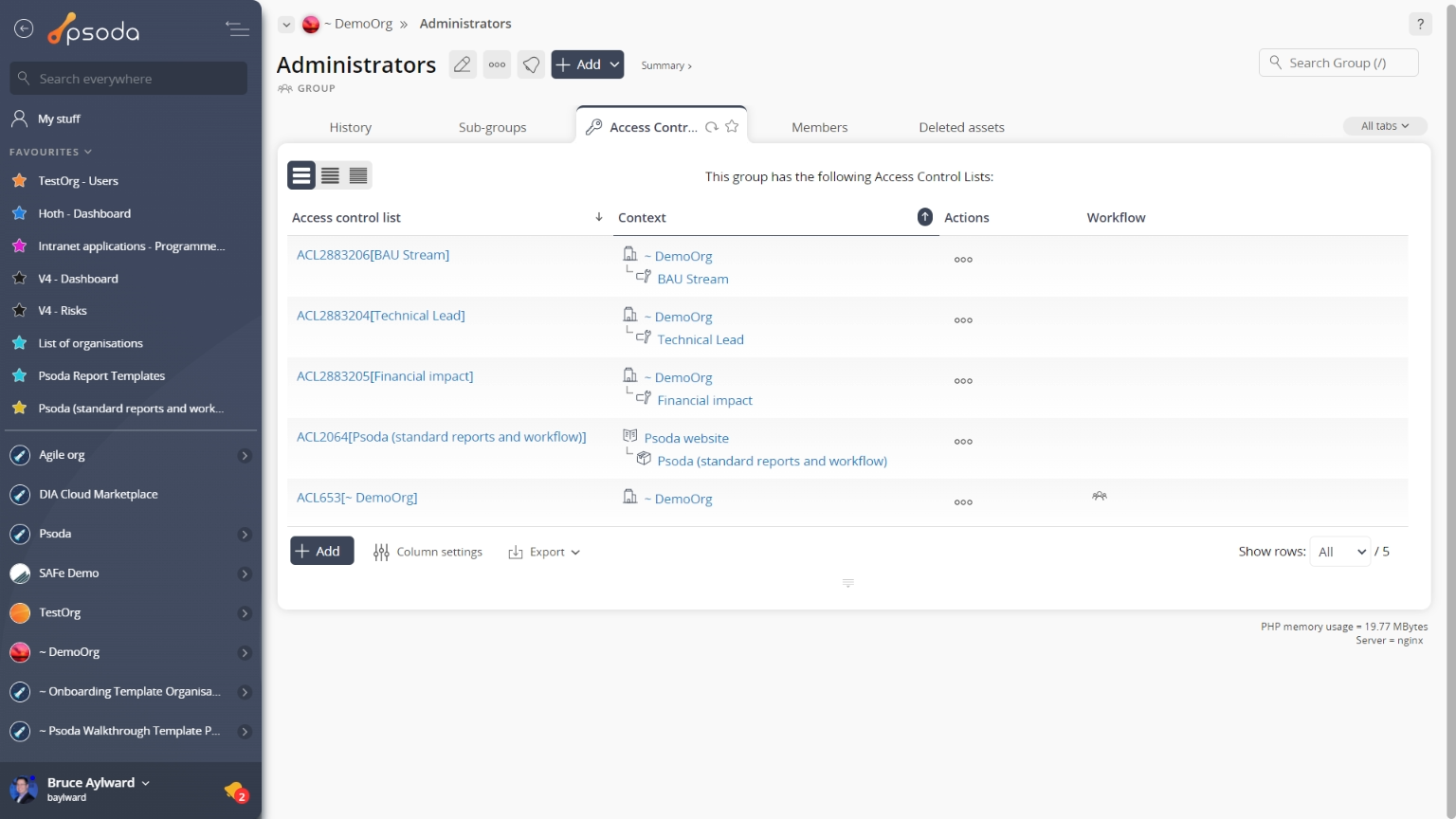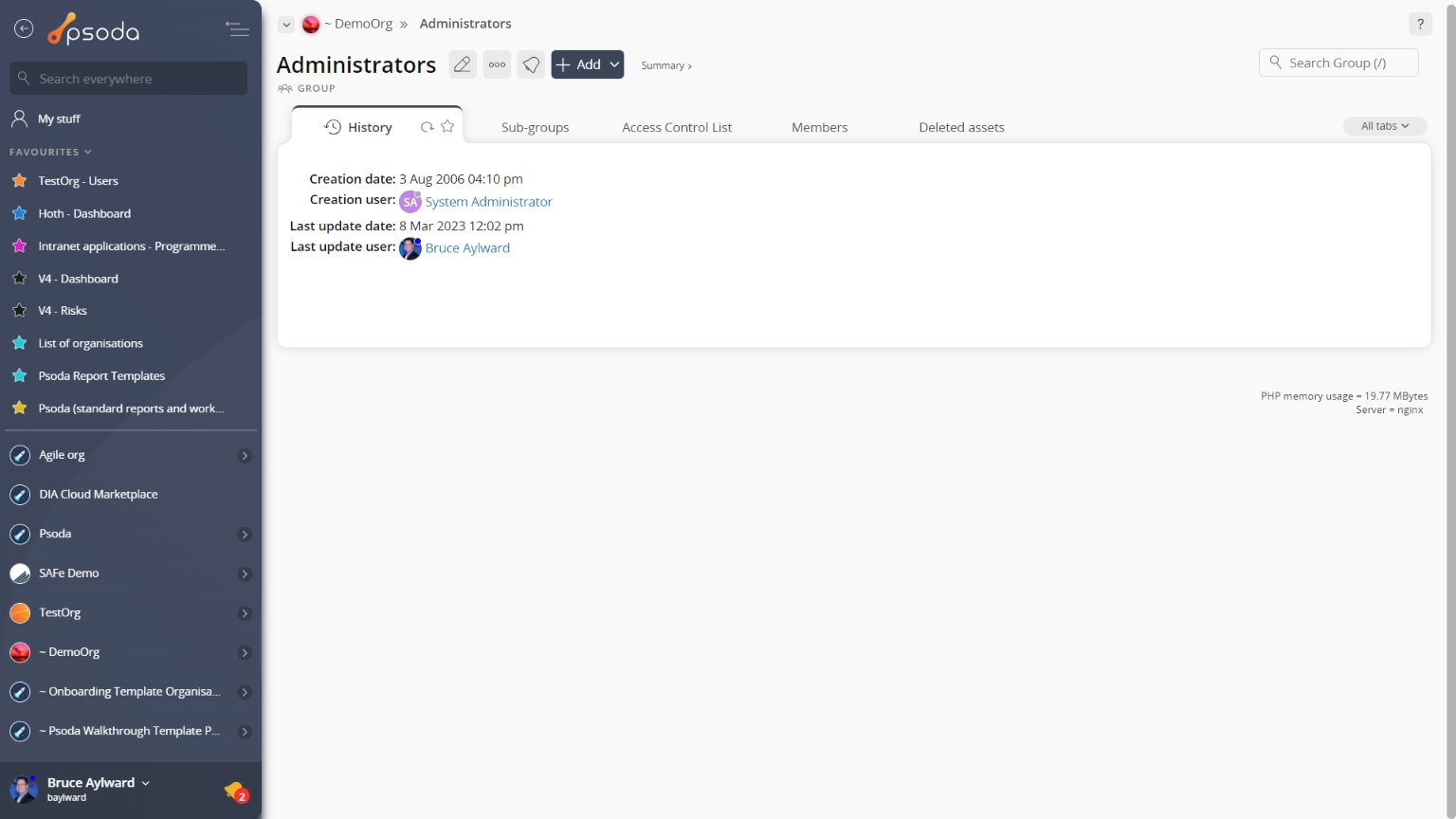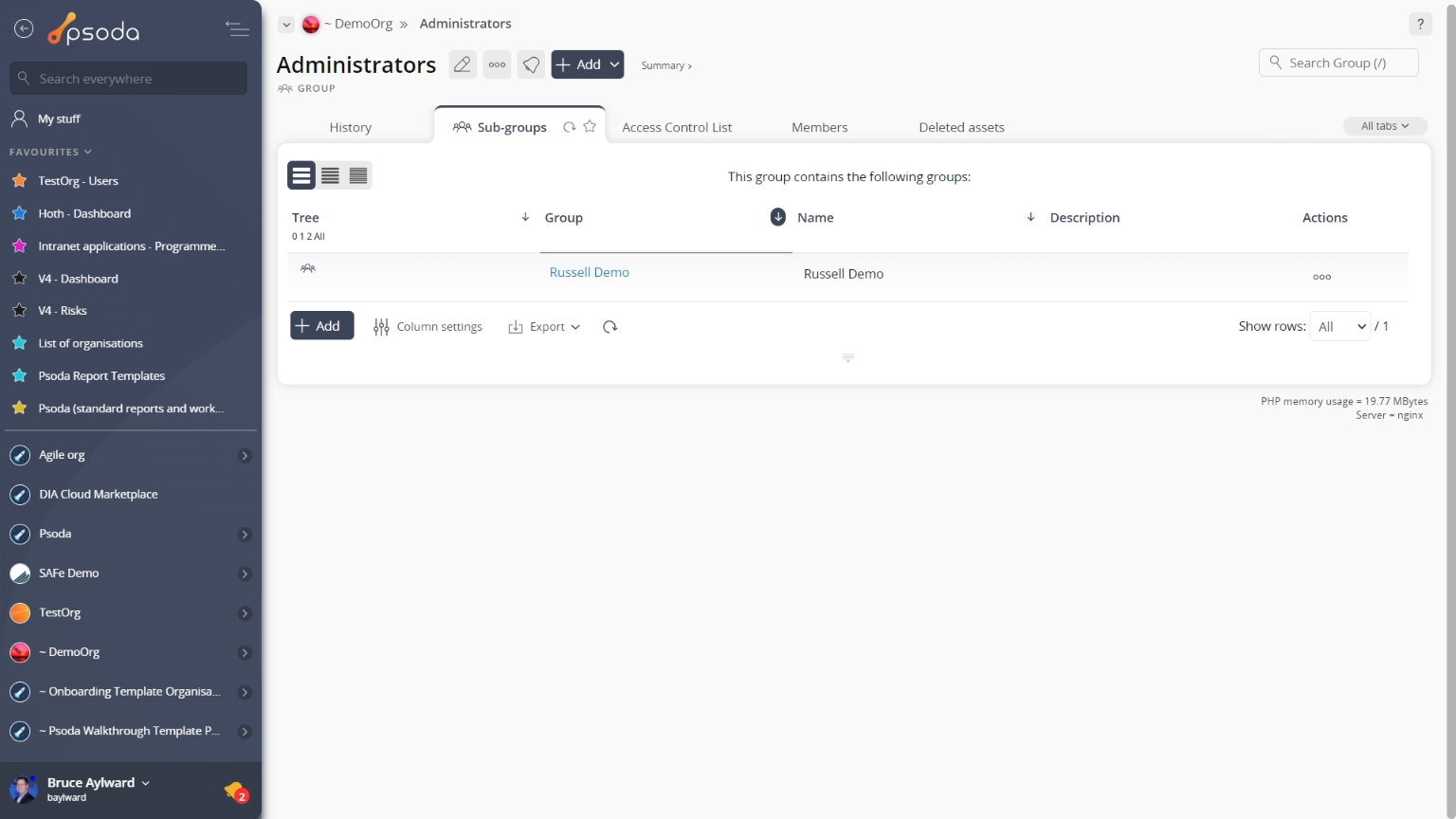This page is shown in Figure 1 and shows all the information relating to the particular security  group.
group.

 edit,
edit,  delete,
delete,  move or
move or  copy the group;
copy the group;  add a sub-group;
add a sub-group;  add an ACL for this group.
Some details of the group are displayed in subsections just below the top header area, such as the group’s location within Psoda, and a description of the group itself. The group’s name and description supports inline editing. The rest of the page is made up of a number of tabs or sections (depending on your selected view):
add an ACL for this group.
Some details of the group are displayed in subsections just below the top header area, such as the group’s location within Psoda, and a description of the group itself. The group’s name and description supports inline editing. The rest of the page is made up of a number of tabs or sections (depending on your selected view):
This tab shows an asset listing of all of the access control lists that have been added to this group, as shown in Figure 2. By default, this table will present you with a number of details about the ACLs such as the list itself and the context to which this ACL applies. If you click the link in the ACL column, you will navigate into the selected ACL’s view page.
From the Actions column of this ACLs table, you can act on individual ACLs by  editing or
editing or  deleting the selected ACL.
deleting the selected ACL.

 edit button at the bottom of the ACL table or navigate to this same spot to
edit button at the bottom of the ACL table or navigate to this same spot to  add more ACLs to this group. Here, you can also export this list to
add more ACLs to this group. Here, you can also export this list to  Excel or
Excel or  CSV files.
CSV files.
This tab shows shows some basic history of the group, as shown in Figure 3. By default, this tab will present you with a number of details about the group’s history such as the creation date, creation user, last update date and last update user. If the group has been changed then this section will also show a table of all the changes that has been made, including the date of each change, the field changed, the value before the change and the user who made the change.
This tab shows an asset listing of all of the  users who are members of this group, as shown in Figure 4. All of the members of this group will get the access defined by the ACLs in the group as well as all of the parents of this group. By default, this table will present you with a number of details about the users such as if they are currently online, their last action, username, what timezone they work on, who their line manager is, which department they are in and what other groups they belong to. If you select the username, you will navigate into the user’s view page.
From the Actions column of this users table, you can act on individual users by
users who are members of this group, as shown in Figure 4. All of the members of this group will get the access defined by the ACLs in the group as well as all of the parents of this group. By default, this table will present you with a number of details about the users such as if they are currently online, their last action, username, what timezone they work on, who their line manager is, which department they are in and what other groups they belong to. If you select the username, you will navigate into the user’s view page.
From the Actions column of this users table, you can act on individual users by  editing,
editing,  deleting ,
deleting ,  moving or
moving or  impersonating the selected user. From here you may also have access to
impersonating the selected user. From here you may also have access to  change this user’s password or
change this user’s password or  download their vCard.
download their vCard.

 edit button at the bottom of the table. Here, you can also export this list of to
edit button at the bottom of the table. Here, you can also export this list of to  Excel or
Excel or  CSV files.
CSV files.
This tab shows an asset listing of all of the sub-groups that have been added to this group, as shown in Figure 5. By default, this table will present you with a number of details about the sub-groups such as if the name and description.

 edit button at the bottom of the sub-groups table or navigate to this same spot to
edit button at the bottom of the sub-groups table or navigate to this same spot to  add more sub-groups to this group. Here, you can also export this list to
add more sub-groups to this group. Here, you can also export this list to  Excel or
Excel or  CSV files.
CSV files.

Figure 1 – Group view page
The top header area allows you to Access Control Lists
Access Control Lists
This tab shows an asset listing of all of the access control lists that have been added to this group, as shown in Figure 2. By default, this table will present you with a number of details about the ACLs such as the list itself and the context to which this ACL applies. If you click the link in the ACL column, you will navigate into the selected ACL’s view page.
From the Actions column of this ACLs table, you can act on individual ACLs by 
Figure 2 – Group ACL tab
Note that you can customise your table view by clicking the History
History
This tab shows shows some basic history of the group, as shown in Figure 3. By default, this tab will present you with a number of details about the group’s history such as the creation date, creation user, last update date and last update user. If the group has been changed then this section will also show a table of all the changes that has been made, including the date of each change, the field changed, the value before the change and the user who made the change.
Figure 3 – Group history tab
Note that you can customise your change table view by clicking the edit button at the bottom of the change table. Here, you can also export this list of changes to
Excel or
CSV files.
 Members
Members
This tab shows an asset listing of all of the 
Figure 4 – Group members tab
Note that you can customise your table view by clicking the Sub-groups
Sub-groups
This tab shows an asset listing of all of the sub-groups that have been added to this group, as shown in Figure 5. By default, this table will present you with a number of details about the sub-groups such as if the name and description.

Figure 5 – Group sub-groups tab
Note that you can customise your table view by clicking the